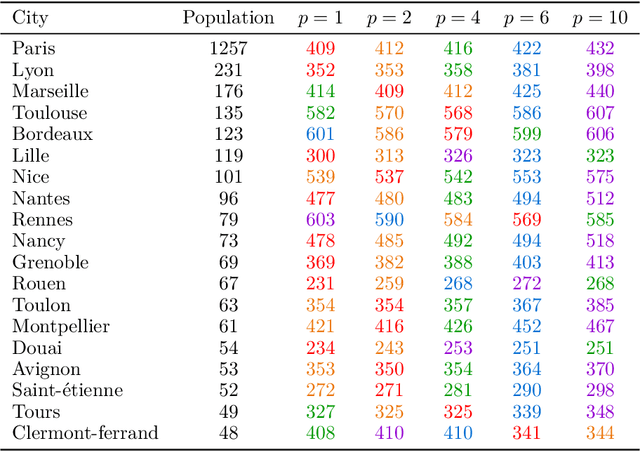Fair Railway Network Design
Paper and Code
Sep 03, 2024



When designing a public transportation network in a country, one may want to minimise the sum of travel duration of all inhabitants. This corresponds to a purely utilitarian view and does not involve any fairness consideration, as the resulting network will typically benefit the capital city and/or large central cities while leaving some peripheral cities behind. On the other hand, a more egalitarian view will allow some people to travel between peripheral cities without having to go through a central city. We define a model, propose algorithms for computing solution networks, and report on experiments based on real data.
* 32 pages, 18 figures
 Add to Chrome
Add to Chrome Add to Firefox
Add to Firefox Add to Edge
Add to Edge